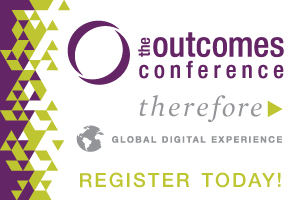
Elusive Major Donors By Michael J. Brown
Cultivation is a Key to Unlocking Elusive Major Gifts
We are blessed to live in a nation with a long history of a strong charitable culture. Last year alone, $427Bn was given in U.S. philanthropy1.
Interestingly, there have been significant changes in the philanthropic landscape that nonprofits need to be aware of. For the first time in 65 years, individual giving has fallen below 70%. At the same time, charitable gifts of high net worth individuals have grown exponentially in importance. These households represent a little over half of all itemized donations. In contrast, a decade earlier they represented only thirty percent of itemized donations2. These factors combined illustrate the increasing importance of major gift programs to the long-term sustainability of nonprofit organizations.
Major Donors
As important as major gifts are, it is critical for nonprofit leaders not to confuse them for a panacea for charitable organizations or major donors as genies in a bottle. It can be alluring to think that with the attainment of both, all of the organization’s concerns will vanish.
For organizations big or small, major gifts often end in elusive pursuits, but why? Could it be that we are rubbing major donors wrong? Perhaps major giving is less about capacity than it is about passion. Maybe it is less about tactics than it is about deeply cultivating relationships.
Imagine This
You have spent your entire life working long hours, while diligently scrapping to save every extra dollar you earn. A stranger or vaguely known acquaintance comes to you sharing a truly heart-wrenching story. Although you might give something to help solve this person’s ills, how likely would you be to give a prayerfully large sum of money?
In other words, would your relationship be strong enough to trust this person with a truly transformational gift? The situation is really no different for your charitable organization or a charitable cause.
Build Relationships
Fundamentally, fundraising is about relationships. The fruit of those relationships is money, volunteer time, increased trust, and many other things. Major donors are like trees planted in an orchard. The deeper and broader their root structures, the more plentiful the harvest of fruit will be.
Strategic donor cultivation efforts expand and build the root structure of your relationships between your organization and your most highly invested donors. There are multiple considerations to keep in mind as you cultivate donors.
Steward Well
Before creating a moves management or any other type of donor engagement plan, you need to consider the current capabilities of your organization to steward its donors.
- What is the internal environment of your fundraising?
- Are fund development goals on-pace to meet your objectives, or are they in jeopardy and causing the development person to be in firefighting (rather than maintenance and growth) modes?
- How are your mission and objectives reflected in your cultivation strategy?
These are the types of questions that will help you assess your institutional readiness to move forward in cultivating healthy, symbiotic donor relationships—the types of relationships where both donors and organizations cooperatively grow in mutual interdependence.
Know Deeply
Another important consideration is how well do you really know your existing donors.
- What data have you gathered on their individual tastes and preferences?
- What are their interests and hobbies?
- What are their philanthropic goals?
- Can you identify the natural touch points where your organization can non-intrusively make meaningful contact with your donors?
- How do they prefer to be communicated with: mail, telephone, face-to-face?
Cultivation efforts can be as simple as sending birthday cards and making courtesy phone calls, to attending events and providing special volunteer opportunities that help deepen the donor’s level of engagement, linkage, and interest with the organization. The best opportunities help breathe life and warmth into a worthwhile cause.
Invest Time
Cultivation is the critically important bridge between identifying donor prospects and asking for major donor support. These are major emotional deposits your organization invests in your prospective and current major donor relationships. They typically include face-to-face meetings, being invited to join an important advisory committee or task force, serving as an ambassador of the organization while giving onsite tours, playing prominent roles in special events, receiving rewards or accolades for charitable work, and being granted premium access through leadership circles and forums.
To delve further into topics like this and other important themes critical for major donor campaign success, register for the 10-week Major Gifts Fundraising class being offered through Christian Leadership Alliance’ Outcomes Academy online. Powered by Los Angeles Pacific University, enrollment is open through Monday, September 23, 2019!
####
Michael J. Brown, Associate Director of Philanthropic Service for Institutions. He also served as faculty and will be facilitating the Major Gifts Fundraising course during the Fall term of the Outcomes Academy Online!
Today is the Last Day to Enroll in the Outcomes Academy Online Fall Term!


What is Christian Leadership Alliance?
Christian Leadership Alliance equips and unites leaders to transform the world for Christ. We are the leaders of Christ-centered organizations who are dedicated to faithful stewardship for greater kingdom impact.
Sign up for FREE blog updates.
Upcoming Events
Check back later!



